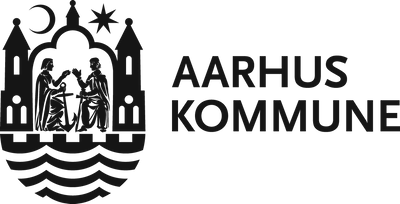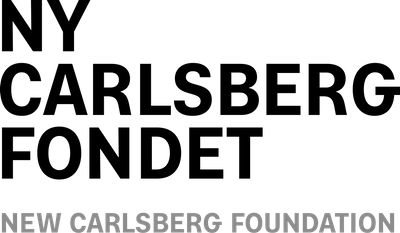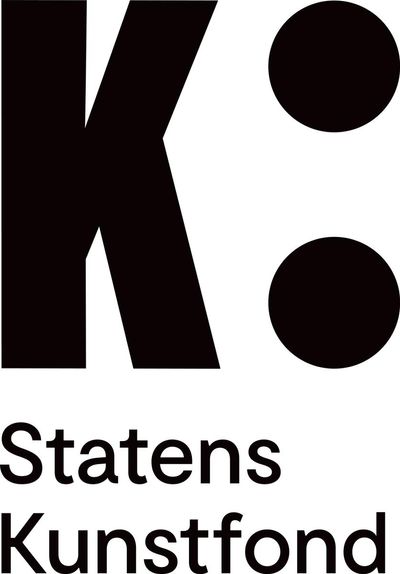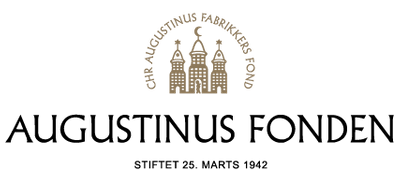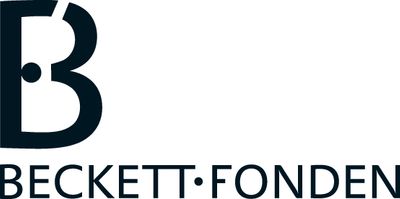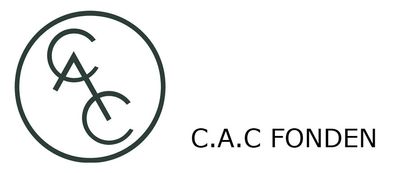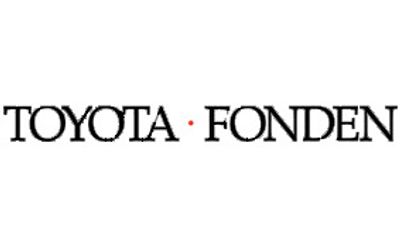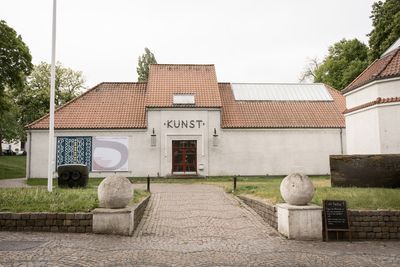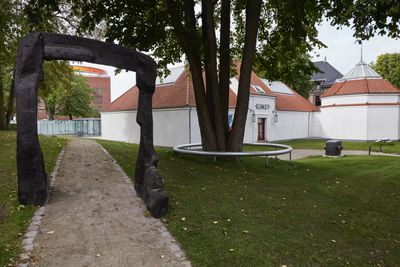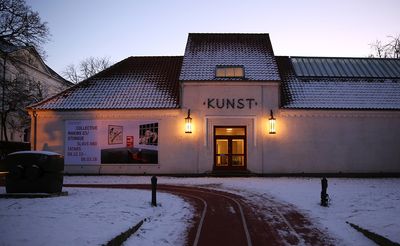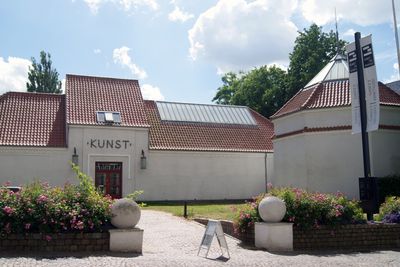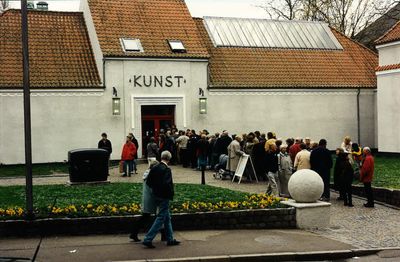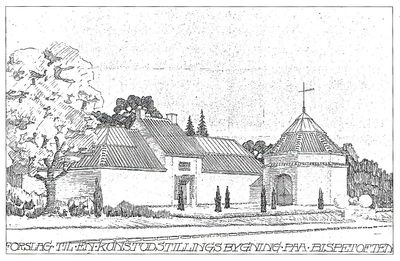Profile and history
Kunsthal Aarhus is a small oasis in the heart of Aarhus, presenting experimental art from local, national, and international artists. The exhibition programme features solo shows with prominent artists, larger annual solo and profile exhibitions, as well as ongoing collaborations such as the yearly MFA Degree Show for graduates from the Jutland Art Academy and The Artists’ Easter Exhibition, KP & SPRING.
A new direction for 2025-2030:
Kunsthal Aarhus’ vision sets the course for 2025-2030. Developed collaboratively by the board, management, and staff, the vision focuses on four key areas – image, artistic profile, community, and in-house operations – which together define what the Kunsthal aspires to become.
Read the vision here.
Collaborations, networks, and support:
Kunsthal Aarhus actively develops its networks and engages in collaborations locally, nationally, and internationally, across exhibitions, the sculpture park, events, funding, and sponsorships. Collaborations are approached as opportunities for exchange, growth, and the sharpening of skills and resources, helping all parties involved to explore new horizons. Kunsthal Aarhus views these collaborations and the development of existing partnerships as vital to the institution – both culturally, professionally, and socially.
Most recently, Kunsthal Aarhus has collaborated with Hasselblad Foundation, Tiger Tanuki, The Artists’ Easter Exhibition, JP/Politikens Hus, Art Matter, Jutland Art Academy, Aarhus Festival, Aarhus Billede- og Medieskole, ARoS, VIA University College, Godsbanen, Aarhus Billedkunstcenter, Ice Screen Printing, Aarhus Art Prize, Napalm Kunst, VoxHall, Radar, and Aarhus University.
Kunsthal Aarhus is generously supported by Aarhus Municipality, Ny Carlsbergfondet, Statens Kunstfond, Augustinus Fonden, Spar Nord Fonden, Det Obelske Familiefond, Salling Fondene, Beckett-Fonden, Axel Muusfeldts Fond, C.A.C Fonden, Knud Højgaards Fond, Lemvigh-Müller Fonden, Toyota-Fonden, and Musikpuljen i Aarhus.
Values and community:
Kunsthal Aarhus is an inclusive exhibition space that aims to communicate clearly, enthusiastically, and engagingly to a broad audience, sparking curiosity about contemporary art. This makes dissemination and communication central to the development of exhibitions and activities.
The kunsthal is not only a place for visual art but also a hub for music, film, literature, and other art forms, where cultural events are a core part of the programme and act as a social bridge between audiences.
Visitors at Kunsthal Aarhus should feel welcome and at ease. It is a place to linger and enjoy the atmosphere on multiple levels – through artistic experiences, the café, the shop, and social events. In recent years, Kunsthal Aarhus has developed a strong profile in engaging young audiences, particularly high school, and university students. We collaborate with educational institutions and local actors to create new experiences, meaningful communities, and inspire curiosity about art, creativity, and the insights they bring.
A brief history:
Kunsthal Aarhus has existed as an exhibition venue since 1917. In its earliest days, the venue was known as Kunstbygningen (the Art Building), but in 1955 it was renamed Aarhus Permanente, which was the name of the company that administered the venue as an exhibition space for art, everyday objects, and tools until 1972. The art building was repainted red for the occasion, which a journalist from Aarhus Stiftstidende described in 1955 as “festive brick red”. For a long period, the building was artist-run and exhibited works by local artists. Since 2013, the venue has been called Kunsthal Aarhus and has functioned as a modern art gallery with management, a board of directors, and exhibitions by international, national, and local artists.
The building was originally designed by architect Høeg-Hansen and later expanded by C.F. Møller Architects in the 1990s and 2000s, reaching its current form. Kunsthal Aarhus offers 1,000 square metres of exhibition space across five galleries. In 2017, the kunsthal celebrated its 100th anniversary, making it one of the oldest kunsthaller in Denmark and Europe.
Over the past decade, Kunsthal Aarhus has hosted solo exhibitions by artists such as: Ay-O (2025), Marie Kølbæk Iversen (2025), Nanna Debois Buhl (2024), Maryam Jafri (2023), Nathalie Du Pasquier (2023), Simon Dybbroe Møller (2023), Kirstine Roepstorff (2022), Sammy Baloji (2020), Sondra Perry (2019), Sidsel Meineche Hansen (2018), Thomas Hirschhorn (2017), Otobong Nkanga (2017), Berlinde De Bruyckere (2017), and Elvin Flamingo (2015).
Major group exhibitions have included: Synthetic Summit (2025), Rhizome – Network Without Centre Point (2024), Minimalism-Maximalism-Mechanissmmm (2022), the vision exhibition GO EXTREME (2021–22), Grave Monuments (2021), Post Institutional Stress Disorder (2018-19), WATCHED! Surveillance, Art and Photography (2016), DUMP! Multispecies Making and Unmaking (2015) and Systemics (2013-14).
Previous collaborators include international partners such as KW Institute for Contemporary Art (Berlin), BOZAR Centre for Fine Arts (Brussels), Art Sonje Center (Seoul), and Castlefield Gallery (Manchester), as well as national partners like Statens Museum for Kunst, Kunstmuseum Brandts, Kunsthal Charlottenborg, Cinemateket, Teater Sort/Hvid, and CPH:DOX. Local collaborations include Malt Air, Moesgaard Museum, SPOT Festival, and KØN.
Supported by
